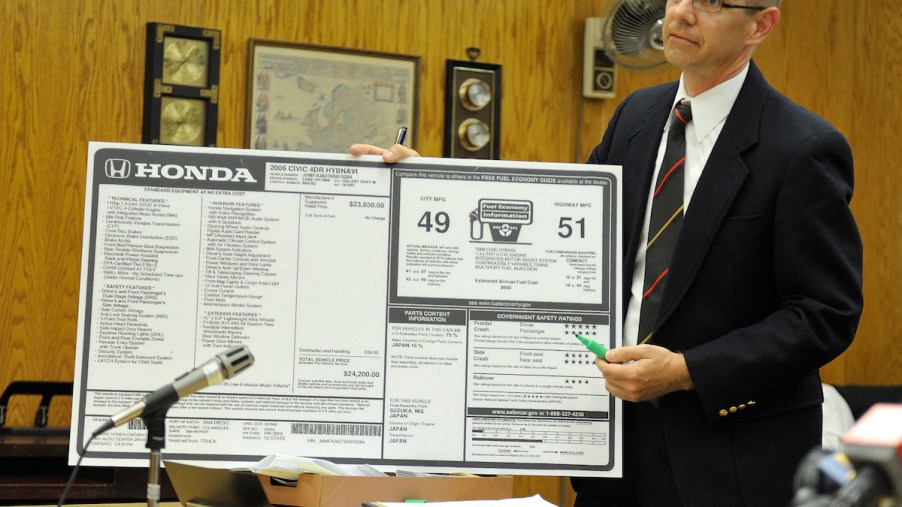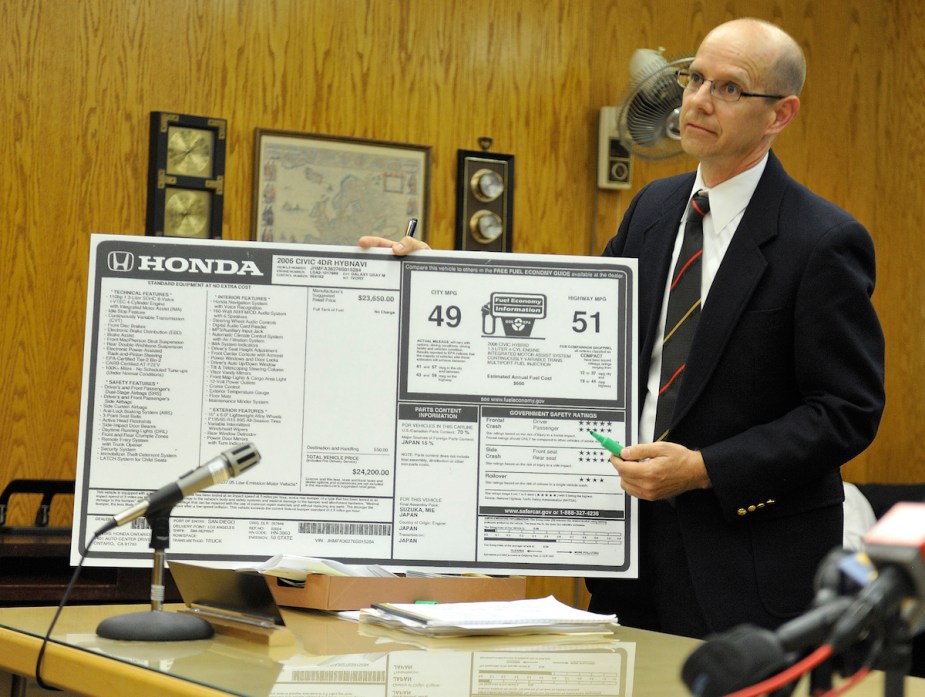
How to Find Out Your Car’s Fuel Economy Ratings
When looking for a car, you want to determine if the vehicle’s fuel economy is what it should be, whether it is new or used. So, where do you begin?
Since the U.S. government mandates that every vehicle have information about its fuel economy, it’s not difficult to find in various ways. Here are some quick and easy ways to find out your car’s fuel economy, calculate it on your own, and improve it.
Monroney sticker

When browsing a dealership lot for a new or used car, one of the details you notice when you study the Monroney sticker is that it lists the vehicle’s fuel economy in the EPA section. The label will have three fuel economy numbers, highway, city, and combined miles per gallon.
Edmunds car reviews
On Edmunds‘ car reviews, select a vehicle and go to the features page for that car. There you’ll see stats such as transmission, drive type, seating capacity, engine specifications, and fuel economy. It will list the fuel type for the vehicle needs, the EPA city, highway, and combined miles per gallon, the range in miles for the city and highway, and the fuel tank capacity.
Government Fuel Economy site
The government Fuel Economy site has everything you would ever want to know about fuel economy for a wide range of vehicles. You can also search for specific vehicles. It has a trip calculator, tips on driving more efficiently, and more.
It’s essential to remember that the figures the government provides on Fuel Economy aren’t always accurate but are figures for the best-case scenario as testing is performed in labs instead of in real-world conditions.
How to calculate your fuel economy
When you next fill up your car all the way, write down the mileage on your odometer and the date you filled your tank. The next step is to drive as you normally would until you reach a point where you have a quarter tank of gas in your vehicle. Most calculations involve running your vehicle to near empty, but you never know where you’ll be and how long you’ll be waiting when you fill up.
When your tank reaches a quarter full, write down the date and the miles on the odometer when you fill up your tank. When you fill your tank, check how many gallons you added. If you have a gas tank that holds 20 gallons, and you drove until it was a quarter full, then you likely used 15 gallons of gas, but the gas pump will tell you how much you put in. Take the miles driven and divide the number of gallons added to get your miles per gallon.
How To Improve Your Fuel Economy
According to the Fuel Economy government site, there are a few ways to improve the fuel economy of your vehicle. These methods include:
- Check tire alignment – Misaligned tires reduce fuel efficiency by up to 10%
- Check tire pressure – Underinflated tires reduce fuel economy
- Fill your tank in the morning or late at night
- Drive sensibly
- Use cruise control when possible


